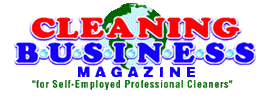Bidding & Cleaning Industrial Facilities
When we think of cleaning industrial facilities we generally envision large heavy industries with big dirty machines and buildings, and this type of account remains a segment of the industrial market. Today an industrial customer can be a small to large, high tech manufacturer or assembler, 3D printer, nano or bio lab or an international aerospace or pharmaceutical giant with hundreds, thousands or even millions of square feet of production, lab, office, warehouse, high tech computer and or cleanroom space.
With over several hundred thousand manufacturing establishments with millions of employees accounting for roughly 8 percent of the U.S. workforce and billions in wages each year, industrial clients are a large and potentially profitable market with special cleaning needs.
Cleaning tasks start with the basics such as office, restroom and floor care and progress to more challenging areas that require the use of specialized chemicals, equipment and procedures found in controlled access and cleanroom environments.
Pricing and Production Rates
There are many factors that should be taken into consideration when bidding industrial locations. Pay and hourly billable and cost per sq. ft. rates will be slightly higher (15% – 30%) than rates charged for commercial office cleaning. It is impossible to give exact numbers as rates depending on the geographic location, industry served, specifications, contract terms, competition and other factors. A study of prevailing wage rates for specific types of cleaning workers in each county will give you an idea as to the high end of the wage rate for the area. (more…)
















